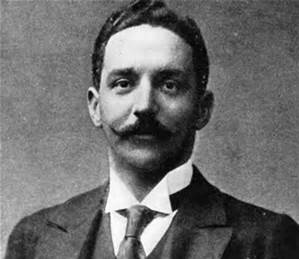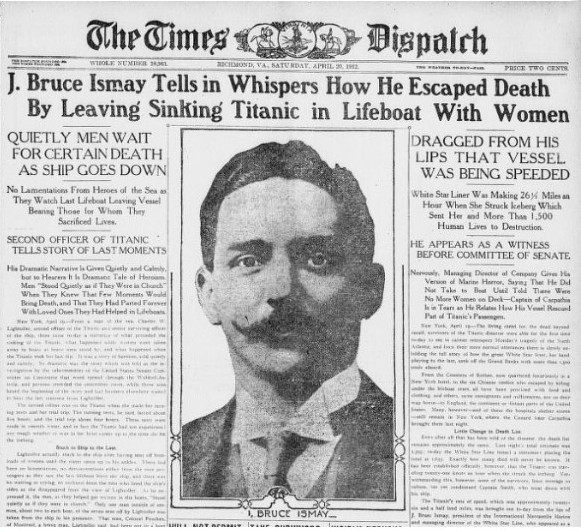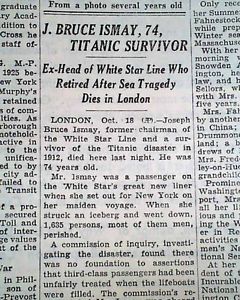The Owner Who Saved Himself
/When the Titanic sank in 1912, most of the blame for the disaster centered on White Star Line’s chairman and managing director, J. Bruce Ismay. After all, it was his ship that caused more than 1500 deaths on its maiden voyage. And the fact that Ismay jumped in a lifeboat and survived added to the worldwide attention and controversy.

Joseph Bruce Ismay was born in Liverpool in 1862, the son of Thomas Ismay, senior partner of Ismay, Imrie and company and founder of the White Star Line. Bruce was made a partner in the firm at age 29, then promoted to head the business when his father died in 1899. In 1901, Ismay agreed to a merger with American shipping companies led by J. Pierpont Morgan. The White Star Line then became part of the International Mercantile Marine Company.
In 1907, Ismay and Lord Pirrie, partner at Belfast shipbuilding company Harland and Wolff, agreed to construct a series of luxurious ocean liners that would outshine Cunard’s new Lusitania and Mauritania. The new WSL ships would carry more third class immigrants to America and offer the very best in accommodations to the wealthy.
As he did on many of the maiden voyages for White Star Line’s ships, Bruce Ismay boarded Titanic as she left Southampton on April 10, 1912. Following the collision with the iceberg, some claimed Ismay assisted with the evacuation of women and children to the lifeboats. Following rescue, Ismay testified at both the US and British inquiries that when he boarded the lifeboat known as Collapsible C, all other boats had left Titanic’s starboard side and no women and children were present.
From the lifeboat, Ismay was so overcome with emotion that he was unable to look as the Titanic sank. Onboard the Carpathia, he was given a private cabin and had to be sedated. Visitors found him in shock and mostly unresponsive for a good part of the trip to New York.
Despite his testimony at the inquiries, hostile newspapers on both sides of the Atlantic labeled Ismay a coward for not remaining on the Titanic as she sank. His reputation never recovered, and he retired from the White Star Line in 1913. Every movie about the disaster depicts Ismay as a villain, regardless of the lack of evidence against him.

In Ismay and the Titanic, author Paul Louden-Brown writes, ‘Hundreds of thousands of pounds were paid out in insurance claims to the relatives of the Titanic's victims; the misery created by the disaster and its aftermath dealt with by Ismay and his directors with great fortitude, this, despite the fact that he could easily have shirked his responsibilities and resigned from the board.'
Bruce Ismay died at the age of 74 after a long battle with diabetes. He is buried in the family grave in London.

Photo credits: rarenewspapers.com, ssqq.com
